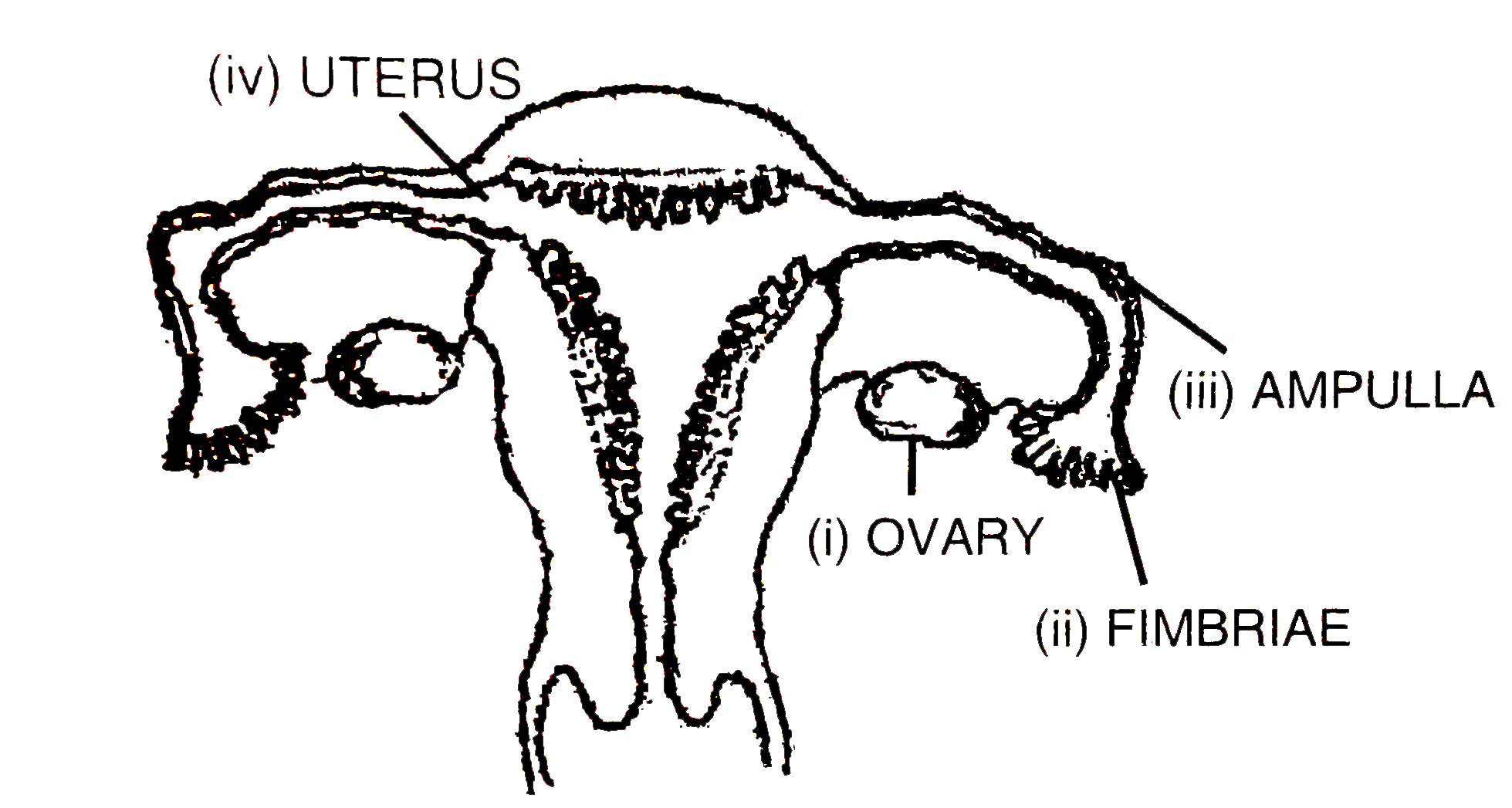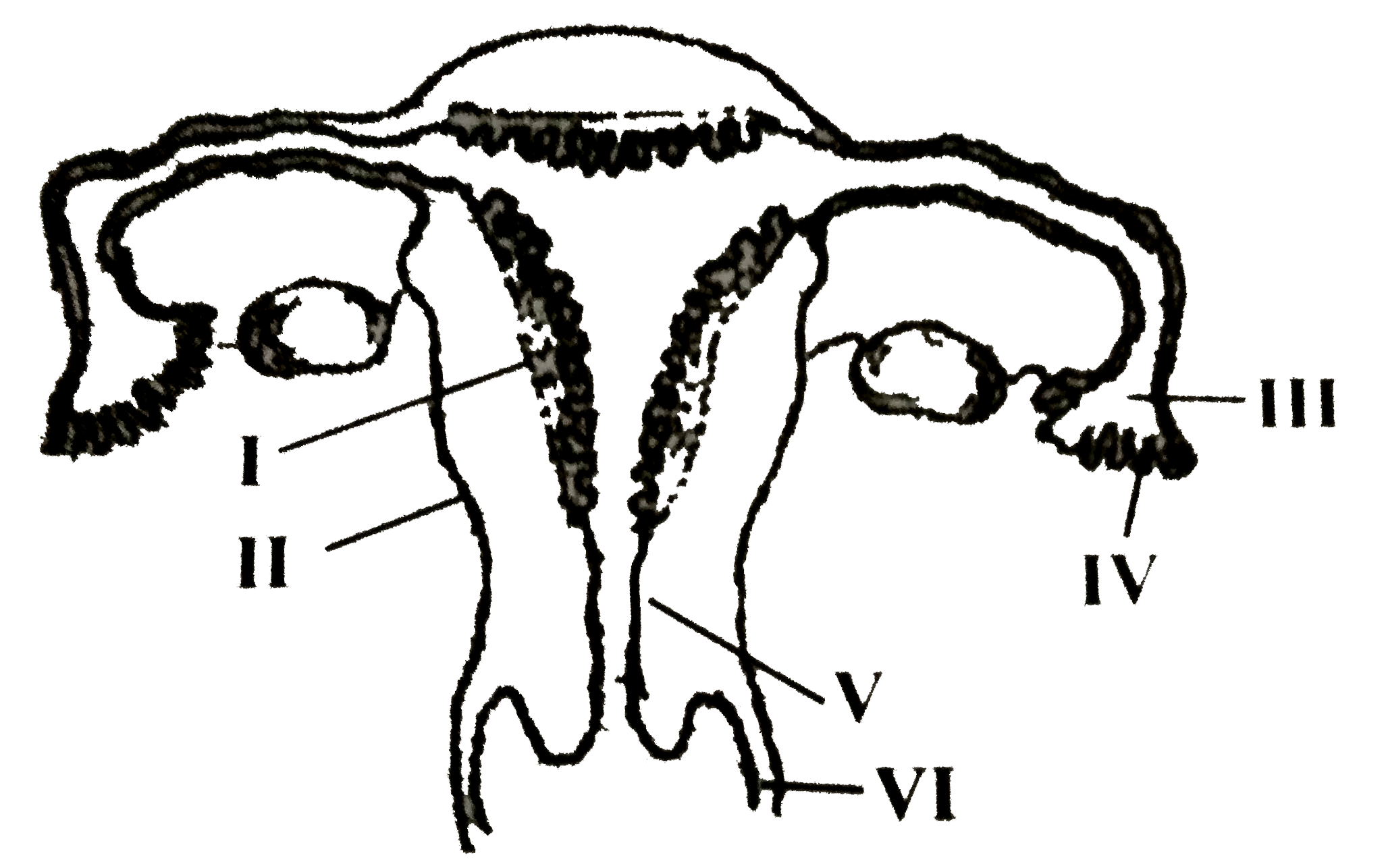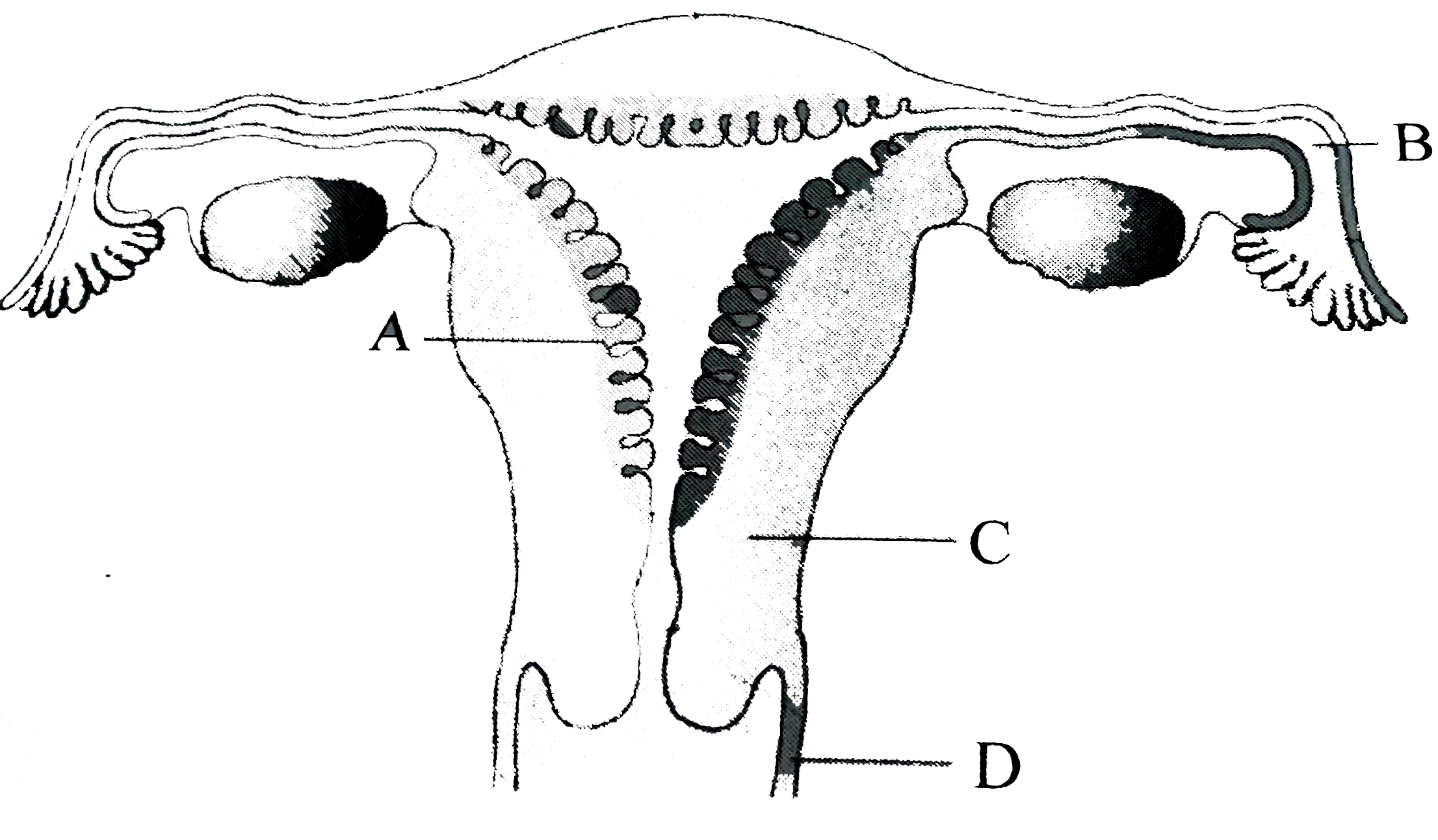(a) Draw a diagrammatic sectional view of the female reproductive system of human and label the parts
(i) where the secondary oocytes develop
(ii) which helps in collection of ovum after ovulation
(iii) where fertilization occurs
(iv) where implantation of embryo occurs.
(b) Explain the role of pituitary and the ovarian hormones in menstrual cycle in human females.

(b) Role of pituitary hormones in menstrual cycle. The secretion of gonadotropins (LH and FSH) stimulates follicular development as well as secretion of estrogens by the growing ovarian follicles. Both LH and FSH attain a peak level in the middle of the cycle (about 14 day). Rapid secretion of LH leading to its maximum level during the mid-cycle called LH surge induces rupture of Graafian follicle and thereby the release of ovum (ovulation) The ovulation is followed by the luteal phase during which the remaining parts of Graafian follicle transform as the corpus luteum. LH maintains the corpus luteum as well as secretion of progesterone by the corpus luteum.
Topper's Solved these Questions
- BOOK - TRUEMEN BIOLOGY ENGLISHCHAPTER - REPRODUCTIONEXERCISE - SECTION -C22videos
REPRODUCTION
- BOOK - TRUEMEN BIOLOGY ENGLISHCHAPTER - Protista EXERCISE - ASSERTION AND REASON6videos
Protista
- BOOK - TRUEMEN BIOLOGY ENGLISHCHAPTER - Reproduction In OrganismsEXERCISE - MULTIPLE CHOICE QUESTION131videos
Reproduction In Organisms
Similar Questions
(a) Draw a diagram of the adult human female reproductive system and label the different :
(i) parts of fallopian tube (ii) layers of uterus wall
(b) Explain the events during fertilization of an ovum in humans.View SolutionGiven here is a section of the female reproductive system in humans.
a. Name the parts labelled 1 to 4
b. Name the part where fertilisation occurs in the female reproductive system.View Solution
Knowledge Check
- Question 1 - Select One
The given figure depicts a diagrammatic sectional view of the human female reproductive system. Which set of three parts out of I−Vi have been correctly identified?
 A(II) endometrium, (III) infundibulum, (IV) fimbriaeB(III) infundibulum, (IV) fimbriae, (V) cervixC(IV) oviducal funnel, (V)uterus,(VI)cervixD(I) perimetrium, (II) myometrium, (III) Fallopian tube
A(II) endometrium, (III) infundibulum, (IV) fimbriaeB(III) infundibulum, (IV) fimbriae, (V) cervixC(IV) oviducal funnel, (V)uterus,(VI)cervixD(I) perimetrium, (II) myometrium, (III) Fallopian tube
(a) Draw a labelled diagram of the human female reproductive system.
(b) Enumerate the events in the ovary of a human female during
(i) Follicular phase
(ii) Luteal phase of menstrual cycle.View SolutionThe given diagram shows a human female 's reproductive system. Select the part (labelled as A, B, C & D) where semen is released into the female by the penis during copulation
 View Solution
View Solution(a) Draw a diagrammatic sectional view of a mature anatropous ovule and label the following parts in it :
(i) that develops into seed coat.
(ii) that develops into an embryo after fertilization.
(iii) that develops into an endosperm in an albuminous seed.
(iv) through which the pollen tube gains entry into the embryo sac.
(v) that attaches the ovule to the placenta.
(b) Describe the characteristic features of wind pollinated flowers.View Solution(a) Draw a diagrammatic sectional view of a mature anatropous ovule and label the following parts in it :
(i) that develops into seed coat.
(ii) that develops into an embryo after fertilization.
(iii) that develops into an endosperm in an albuminous seed.
(iv) through which the pollen tube gains entry into the embryo sac.
(v) that attaches the ovule to the placenta.
(b) Describe the characteristic features of wind pollinated flowers.View Solution(a) Draw a diagrammatic sectional view of a seminiferous tubule (enlarged) of human male and label (i) Spermatogenium, (ii) Sertoli cell, (iii) Primary spermatocyte. Write the function of each labelled part.
(b) Differentiate between spermatogenesis and spermiogenesis.View SolutionExplain the ovarian and uterine events that occur during a menstrual cycle in a human female, under the influence of Pituitary and Ovarian hormones respectively.
View Solution(a) In which part of the human female reproductive system do the following events take place?
(i) Release of 1st polar body
(ii) Release of 2nd polar body
(iii) Fertilisation
(iv) Implantation
(b) From where do signals for parturition originate and what does maternal pituitary release for stimulating uterine contractions for childbirth?View Solution

